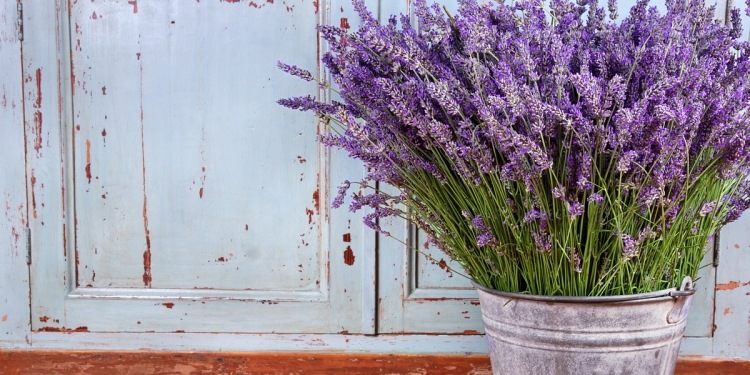We’ve mentioned in a related article how Mexico’s topography and climate zones offer choices about the natural environments to live in across the country.
Another important aspect regarding your choice of location as you short-list places for your home here is whether to live in a town or city, or in a rural or semi-rural area.
Country living in Mexico: the charms
There are many attractions to living in the Mexican countryside. The principal ones include:
Creating your countryside idyll
There’s something comforting about taking enjoyment in a home situated in the Mexican countryside, away from the hustle of urban pursuits and the congestion of contemporary pressures; living amidst the sounds and scents of nature.
The pace of life is more gentle and so, it seems, are the people—often with the benefit of vibrant local communities who organize themselves around common interests. A country home in Mexico can offer this idyll, far enough away from urban sprawls characterized by rushed lifestyles, and often close enough to a town or city where a plentiful choice of services and amenities may be readily obtained.
Rural living in a small Mexican town or village promises respite from the urban ‘rat-race,’ a place where you can live life more deliberately, where young children can experience their childhood in large gardens and wander picturesque streets, and where life’s demands at least appear to be a little less demanding. The charms of living in the Mexican countryside are alluring—and it can be quite affordable…
Affordability
Whether you are renting or buying a property here, you’ll usually pay less per square meter of land and living space in Mexico’s (semi)rural areas than you will in urban towns and cities, especially in comparison to the country’s three big cities: Mexico City, Guadalajara, and Monterrey.
Provincial cities in Mexico’s highlands —whether urban or (semi)rural— can offer some of the best value real estate in Mexico, although prices are very localized, so you need to examine markets on a per-location basis.
There are some notable exceptions where property prices in provincial areas can be as high as, or higher, than urban alternatives. Perhaps the most notable of these is San Miguel de Allende—a colonial mountain town where prices have soared in recent years and homes in the center are comparable in cost to Mexico’s City’s most expensive neighborhoods.
Valle de Bravo and Tepoztlán —semi-rural colonial enclaves within relatively easy reach of the capital that have been popular with Mexicans and foreign residents for decades— are two other provincial locations where residents pay a premium to rent or buy.
Nature and outdoor living
Living in the Mexican countryside gives you easy access to Mexico’s natural habitats, country walks, and breath-taking natural landscapes. The sound of crickets chirping at night is a sure sign you’re falling asleep in a rural idyll, and a dawn chorus of birdsong drifting through your bedroom window adds to the charm when you wake up in the morning.
In addition to the immediate access to nature, country homes tend to offer ample gardens, some have outdoor swimming pools, and many feature quaint terraces which provide attractive spaces for outdoor living and entertaining.
Local people and community
People living in rural and semi-rural spaces tend to be more laid-back than their urban counterparts. You’re more likely to be greeted with a cheerful ‘buenos dias’ on a morning stroll than doing the same thing in urban areas, where locals are generally much more rushed and pressured by the events of their daily lives.
Smaller towns also like to show-off their community spirit: both foreign residents and local Mexicans organize events which, with a bit of local research, you can learn about and be welcomed to as an active participant.
Relaxed and laid-back country lifestyle
Countryside living in Mexico is taken at a slower pace and rhythm than urban life. Provincial rural or semi-rural areas are often the environment of choice for retired people who don’t have the pressures and responsibilities of professional lives, and young families to raise.
Some foreign residents of working age —and even those with young children— do establish lifestyles and become an intrinsic part of local communities in Mexico’s provincial outlying towns and villages and this trend might accelerate with the increasing interest in working ‘online’ with the requirement for physical commutes being less frequent, or perhaps even non-existent.
Country living in Mexico: the compromises
As you explore options for countryside living in Mexico, consider the compromises you’ll have to make, which include:
Physical accessibility and transport links
When you’re researching places to live in the Mexican countryside, consider how the locations you are short-listing will affect how much time and effort it will take for you to get around —and for others to visit you— if this is important to your lifestyle.
Local country roads in Mexico can be adequate but usually take longer to traverse than the line on the map suggests. Some of the access roads may cut through mountains or jungle terrain.
Country roads which pass through small hamlets often feature obstructions like speed-bumps, farm animals, and dogs wandering into the road space, as well local events like festivals or funeral processions adding to the myriad of combinations that can delay your journey’s progress.
When getting to where you need to be matters —for example, when you have a flight to catch or a meeting to attend— these otherwise quaint experiences become reminders about the compromises made in rural living in Mexico.
Consider how often you intend to travel and what transport links exist to facilitate your movements, including the state of local roads, local public transportation, bus stations and airports for longer trips and connections to places abroad.
Most foreign residents living in Mexico like friends and family to visit them, including visits from those living outside of Mexico. Locations in rural or semi-rural Mexico might be served by local roads which take longer to travel across, local public transportation might be limited, the nearest intercity bus station might be a significant distance away, and the nearest regional airport might require more connections to complete the journey, especially when traveling to/from abroad.
Negotiating the local topography
Cobbled streets are picturesque and charming, and prevent road traffic from driving along your residential street at high speed. They also get very slippery in the rain and can be awkward to walk over. They are the least practical pavement type for people with mobility issues.
If you’re considering renting or buying a home which is accessible only via cobbled streets, consider the side-effects this may have on your day-to-day living. Some back-streets leading to beautiful properties in Mexico’s rural towns and villages may be less well-developed than cobbles. Dirt tracks, or roads with loose stones or gravel are not uncommon in rural areas.
During the seasonal rains back roads and country lanes can flood and become mud-baths. Some residents act to create a common fund among neighbors to pave a dirt road for the benefit of all the residents living alongside it; permissions must be sought and although they are usually granted, the cost of the road’s construction and its ongoing maintenance will usually be borne by the residents.
Range of amenities and local services
Rural and semi-rural places in provincial Mexico feature fewer local services and amenities: these include things like food stores, supermarkets, local markets, banks, dentists, doctors as well as leisure facilities like cinemas and restaurants.
Rural stores, the local tienditas, sell everyday basics—although most foreign residents tend to seek out a wider assortment of goods and these won’t be available without a trip to the nearest large town or city.
If you choose to live in the Mexican countryside, you will need to accept that the No Hay factor is far more prevalent in Mexico’s (semi)rural areas than it is in urbanized centers—and plan accordingly.
Access to healthcare and medical services
If access to health and medical services is important to your situation, then you should take care about where you choose to live in Mexico. Urban areas tend to be well-served by doctors, dentists, opticians, clinics and hospitals whereas smaller towns and villages may have, at best, a small local clinic with limited facilities.
Most foreign residents who live in rural (or semi-rural) towns and villages in Mexico travel to the nearest large town or city for routine healthcare matters, including check-ups, dentistry, and eye care.
If the state of your current health carries a higher risk of requiring immediate medical attention or hospitalization —for example, if you have a known heart problem— then living in the Mexican countryside, even if only a few miles from the nearest hospital, could be problematic in the event of an emergency: as discussed earlier in this article, it often takes longer to traverse countryside roads and your journey to the nearest hospital may be delayed in a situation where every minute matters.
Social and cultural connections in rural areas
While practical aspects of a location including transport accessibility and the availability of local services and amenities are important, it’s also wise to consider the social and cultural aspects of a rural location you are considering as part of a lifestyle move.
Assessing whether a rural or semi-rural location will serve your social and cultural needs and the potential impact that a move to a countryside location will have on you requires knowing yourself—and yourselves if you are thinking about moving with a partner or family.
If you need strong cultural amenities to support your wellbeing, for example, ready access to art galleries, music halls, theater and dance, spirituality and well-being centers, as well as other cultural events, consider how the rural locations you’re short-listing provide for those—or how far you will need to travel to a larger town or city to access them.
Most rural villages and hamlets in Mexico are by definition “off the beaten path” and don’t have foreign residents living in clusters that form local ‘expat’ communities of they type which can provide an immediate ‘community of interest’ and can be especially helpful to newcomers finding their feet, and finding their way around the locality.
For some, the notion of being ensconced in a rural setting far away from the crowds is attractive and perhaps even desirable. However, if you (and your partner) need social connections to thrive, moving to a rural or semi-rural location in Mexico where there are no like-minded communities established will require more effort on your part to cultivate new friendships, and to integrate locally including the ability to speak Spanish and adapt to local customs and traditions—some of which might feel quite unusual to you, at least to begin with.
Even the most hermit-like characters discover that they need to make an effort to integrate their lifestyles amidst rural locations where local customs and traditions are keenly observed, and residents are expected to participate and contribute when important local events, festivals, and activities take place.
The free and continually-updated guide to living and retirement in Mexico, contains chapters about considering your lifestyle intentions and tips for choosing places to live in Mexico.
Liquidity of (semi)rural real estate markets
If you’re accustomed to living someplace where the buying and selling of homes is brisk and the market is liquid (that is, there are plenty of able buyers and sellers and housing transactions are fluid) then you will need to recalibrate your timescale expectations when you own a home in the Mexican countryside.
Real estate markets in Mexico are different to those in the US, Canada and Europe; and in particular, properties can take longer to sell —sometimes considerably longer— and the closing process can take longer than you might be accustomed to. Homes in popular, often more urbanized, areas across Mexico can sell relatively quickly in a buoyant market; however, if you own a property in rural Mexico you ought to exercise patience when you decide to sell, and plan ahead with a longer sales cycle in mind.
The matter of property market fluidity can become pertinent if you need to sell due to an unexpected change in circumstances, or your life situation begins to evolve: examples include needing to move due to health reasons, a change in your personal or work circumstances, or because your children could use being closer to a school they are attending.
Rural property might not offer title deed
Another factor to consider regarding rural property in Mexico is that many idyllically located homes are not sold using titled deeds, and so you must be prepared to buy and possess the property on agrarian terms.
Many Mexicans and foreign residents live in country properties which give them possession but not title through a legal deed, and pass quiet enjoyment of their dwelling space without any problems, including selling (or bequeathing) the property to others in due course. However, it’s prudent to be aware of the terms on which you buy your rural property in Mexico, and this article describes the differences between possession and titled property.
Schooling for your children
If you have children of school age, you should plan your location with their schooling requirements in mind. Some foreign residents choose to school their children in local Mexican schools, and some home-school, but most choose to educate their offspring at private schools.
While provincial towns and villages you shortlist for living might offer at least one privately-run elementary school, access to private secondary and tertiary education facilities is only available in larger cities in Mexico. If you purchase a home in rural Mexico when your children are very young, a local elementary school may be adequate for their needs.
When your children grow and need secondary-level schooling, you’ll probably need to commute each school day to the nearest city where an adequate choice of schools exists, or move. As we noted in the previous section, houses in rural and semi-rural places in Mexico usually take longer to sell than houses in urban areas. Some families rent their country home and use the rental income to pay their rent in a city while their children are passing through their secondary school-age years. Learn more about schooling your children in Mexico and also learn about property rentals in Mexico.
Electricity supply
Mexico’s electricity supply has been improving constantly in recent decades but the reliability of rural and semi-rural electricity supply continues to trail behind urbanized areas. When the lights go out places with higher concentrations of residents tend to get higher priority for service restoration than homes situated on quiet country lanes. Read our free guide about house maintenance in Mexico for details concerning the practicalities of house ownership, including electricity services.
Internet access and cell phone coverage
Provincial areas tend to have slower internet connection speeds than urban areas, and the same climatic conditions which cause electricity outages can cause internet connections to fail.
However, rural internet services have been improving dramatically in recent years, and some villages now have fiber optic internet lines that offer residents reliable internet access with high speed connections.
For areas which are still lacking in wired (or fiberoptic) services, access to Wireless Home Internet (internet access at home delivered over mobile data networks) is helping to alleviate provincial internet ‘dead-zones’ and providing a back-up to landline-based internet services.
Cellphone coverage is constantly improving across the country, but in rural and semi-rural towns you can expect signal strength and reliability to be less robust that coverage in more urban areas.
If your home is situated in a very rural area, where neither cabled or cellphone services are available, satellite internet is an option, and services like Starlink offer high speed and reliable connections, even during rain storms.
Maintaining and securing a country home in Mexico
Bigger country homes, like bigger automobiles, need more maintenance; large gardens need constant tending; swimming pools require routine care, and when you’re away you need to take additional steps to mitigate burglaries which are common in countryside homes, especially if they are left unattended by their owners for more than a few days.
Read our free and regularly-updated guide about house maintenance and home security in Mexico for comprehensive insights about the practicalities of house ownership here; including regular maintenance, as well as guidance and tips for securing and insuring your home against physical damage and burglary.
Dealing with noise
Mexico’s countryside is not always as quiet and tranquil as one might expect. Local festivals and events tend to be highly energetic with loud music and fire crackers often prominent features of these local gatherings.
If your home in Mexico is situated well off the beaten path, perhaps entirely surrounded by rural country fields, forested areas, or even jungle, then the sound of cicadas, crickets, wild animals, tropical birds, and even spider monkeys might be an integral part of your daily (or nightly) soundscape.
In more built-up areas, local churches ring bells and set-off loud fire crackers on all types of occasions: weddings, christenings, and Saint’s Days to name a few; sometimes at unusual hours.
Dogs barking on roof-tops, local traffic noise, ad-hoc parties and festivities at neighboring homes, as well as the constant parade of local merchants driving past in cars and small trucks with loud-speaker announcements offering to buy or sell a myriad of goods and services are all features which might contribute to the local soundscape around you.
This soundscape is not unique to the countryside, but it’s worth remembering that living in a rural idyll doesn’t exclude you from it.
In summary
There are some truly beautiful and picturesque rural and semi-rural towns and villages in Mexico, but as you’re exploring places to live, it’s important to remain focused on the practical aspects of living day-to-day in the place of your choice.
Considering your needs
Weighing-up the choices between living in a Mexican rural idyll and an urban conurbation (or somewhere in-between) brings into play a range of practical and personal considerations.
Some people enjoy the diverse culture with ready-access to an abundant range services and amenities afforded by living in urbanized areas, while others prefer the relative tranquility and simpler lifestyles afforded by rural Mexico.
For all the compromises, a country home in Mexico can provide an idyllic lifestyle for you and your family: with near-perfect climates, gardens that burst with color and fragrance, and an abundance of affordable space, it’s no surprise that rural Mexico remains a popular choice for foreign residents exploring options here.
The counterbalance is that every activity you engage with when you live in a rural place will take at least a little bit more effort than if you live in an urban environment. And consider also the responsibilities of country home ownership across the generations.
Our free guide about Living and Lifestyles in Mexico contains an entire chapter about the importance of setting out your intentions and identifying your true needs.
Your life-stage and personal priorities
Ultimately, whether the Mexican countryside is a good choice for you will depend on your life-stage, your lifestyle preferences, personal priorities, and practical matters, for examples, the state of your general health, whether you have children to school, and how much regular access you need to certain things and services like professional contacts for work, local shops, healthcare services, road transport links, and airports.
Take time to pause and consider your social and cultural needs too. There’s a difference between consciously intending to create a simple lifestyle ‘far from the madding crowd’ —and being mindful about the compromises of doing that— versus inadvertently isolating yourself (and your partner and family) from things and matters that are important to your life styles and wellbeing.
Our free guide to living and lifestyles in Mexico highlights the importance of taking your partner’s and other family members’ needs carefully into account to avoid potentially troublesome situations when choosing a place to live in Mexico.
Measure twice, cut once
Taking time to choose your location with care pays dividends in the longer term. Rushed decisions driven by impulse or whimsical notions —especially when you’re buying a property here— are costlier to recover from if you discover the compromises after the fact.
Recognizing the difference between your immediate and forthcoming lifestyle needs, reflecting on these and considering your choices pragmatically will help you to make informed decisions. This is one reason why we recommend you rent for a while before committing to buy, unless you’re already familiar with the area and confident about your intentions and the location’s attractions in relation to them.
Some people use a process of trial-and-error, moving around to different types of places before they choose a location to settle longer term: this can work, but it will demand more time, effort, and funds from you.
Discover places to live in Mexico
Discover interesting and charming locations to live, work or retire in Mexico, and articles with helpful insights about choosing a place to settle here on our section about Places to Live.
Resources for Living & Lifestyle in Mexico
Mexperience offers you a comprehensive online resource of information and local knowledge to help you discover Mexico, explore choices, find opportunities and plan a new life in Mexico. Our resources include:
- Articles and guides help you plan your lifestyle in Mexico
- Insightful articles about living and lifestyle in Mexico
- Complete and continually-updated guides to aspects of living in Mexico
- A regular Mexico Newsletter you can subscribe to for free
Mexico in your inbox
Our free newsletter about Mexico brings you a monthly round-up of recently published stories and opportunities, as well as gems from our archives.













Hi,
Very good information.
Thank you
Sara
Hello–I am interested in life in rural/semi-rural Mexico and looking around the internet for insightful articles such as this. However, I’m an avid equestrian and can’t find much about small farms with homes on them in Mexico. Most links provide information about boarding horses, but I’m looking for a lifestyle comparable to what we have in Ohio–small farm, horses are right out my back door on 24/7 pasture, and places to ride (trails). I realize fully that there may be compromises I’d have to make, but would like to know if folks have anything close to what we have here.
you might look at towns on the south shore of lake Chapala such as San Luis Soyatlan, Tuxcueca, and Tizapan.
10 years ago I lived just outside of SLS and enjoyed many rides using the horses of a friend of my gardener.
It’s about an hour to go around the lake to get to Ajijic but currently all the amenities you need to live comfortably are on the south side of Lake Chapala.
There are also two towns in the valley just to the north of San Juan Cosala which I live near.
Thank you. Excellent article.
You’re very welcome, and thank you for your patronage and for taking the time to express your kind appreciation!
Good job. Re: “There are some truly beautiful and picturesque rural and semi-rural towns and villages in Mexico…” Why not an article or a series highlighting some examples of such areas.
Hi John, thanks for the comment and the suggestion — we will undertake this and publish later this year.
Well written article and very true. We live in a 4,000 ft house on a remote Caribbean beach surrounded by wild, undeveloped jungle. It is a two hour drive to competent medical and Canadian style supermarkets. We make that trip two or three times a month. For top notch, medical specialists, we drive five tours to Merida. There are not a lot of people but it is amazing how noisy and how many interruptions it can get at times.
We drive about 30 minutes to a Pueblo with fairly good restaurants on roads that can be rough and slow the first 15 minutes, then paved and smooth.
I write all this because everything the article says is pretty spot on. We love our rural life in Mexico tremendously.
This is Ian again. I was not able to address the issues of security and internet because our workers needed direction. So, here’s round two.
Security: We have two homes in rural areas on opposite corners of Mexico.
Baja, in 17 years, the house has been broken into three times as the house was vacant 10 months a year. I have put up walls and locked wrought iron fences that I think have made that a bit harder. Neighbors tell me there has been a dramatic increase of burglaries but our house has not been hit.
Quintana Roo, we have lived here for 16 months and have been successfully burglarized once with another thwarted attempt. We are very remote here but in both cases the burglar entered off the beach. After the first theft we installed very decorative wrought iron bars on all the windows and sliders. We also now have a dog who sleeps inside at the largest sliding glass wall. His barking and the bars thwarted the the second burglar. Neighbors on both sides (a hundred yards away) where home and were hit.
Internet/cell reception: We have Tel Cel internet and phone with a T-Mobile cell phone too. We have an antenna on top of the third story with a signal booster that sends the signal down into the house. Most of the time the internet and cell reception is good enough to play Netflix and everything with no problems. We pay about $20 a month.
Housekeeping: Because we are quite remote we must use local people. We have a team of three local ladies who come once a week and do a great job. They asked for 750 pesos for what takes most of the day. We pay them 900 pesos, the difference is a propina.
Electric: We have a large solar system but about a year ago CFE electricity was brought out here. We use CFE to charge our solar system during cloudy periods. Typically our electric bills (billed every two months) is between 100 and 200 pesos.
Life in the country is not for everyone. Many people require the stimulation of city life. We miss the restaurant scene and excellent sushi bars of British Columbia but, we are not at all regretting our country life in Mexico.
My husband and I have lived in the northwest and now south in the country, we hardly go to city and would love to move to Mexico, a small town, away, with decent internet. Do you have recommendations? We are just starting a serious search rather than dreaming. We enjoy home hobbies; I am thinking as long as we can order or drive every month or so to get supplies.
Hello David,
If you’re seeking a strong and established expat community, then Ajijic/Chapala is worth considering; and San Miguel de Allende; if you’re seeking something by the coast, then Puerto Vallarta has one of the best developed beachside expat communities in Mexico. Lesser known beach locations (off the beaten track) include Manzanillo, San Felipe and Puerto Escondido.
If you’re seeking something off the beaten track in the mountains, then consider Tepoztlán, that is about 30-45 minutes road trip from Cuernavaca, where all the principal services and amenities are situated.
Other rural mountain places you might consider include Pátzcuaro (40 minutes from Morelia), and much further south San Cristobal de las Casas (about 75 minutes from Tuxtla Gutierrez).
Browse our Places to Live section for further insights on these locations, others as well as practical information about choosing a place to live in Mexico:
https://www.mexperience.com/tag/places-to-live/
Well explained and pretty comprehensive – good job!